Don’t worry if you lack outdoor space or a green thumb – plenty of herbs thrive indoors! Not only do these fresh herbs provide delicious flavor for your cooking, but growing herbs indoors adds freshness and life to your home. Many plants thrive in an indoor herb garden, so you can easily choose the best ones for your space!
A herb garden indoor has to be one of the best herb garden ideas. You can set it up in almost any space, from a sunny windowsill to the corner of your kitchen.
But before you start indoor herb gardening, consider your available space. Think about the amount of sunlight and water the plants will need. Understanding the needs of each herb is key to the success of your indoor herb garden.
With this information in mind, let’s take a look at some different plants for your indoor herb garden!
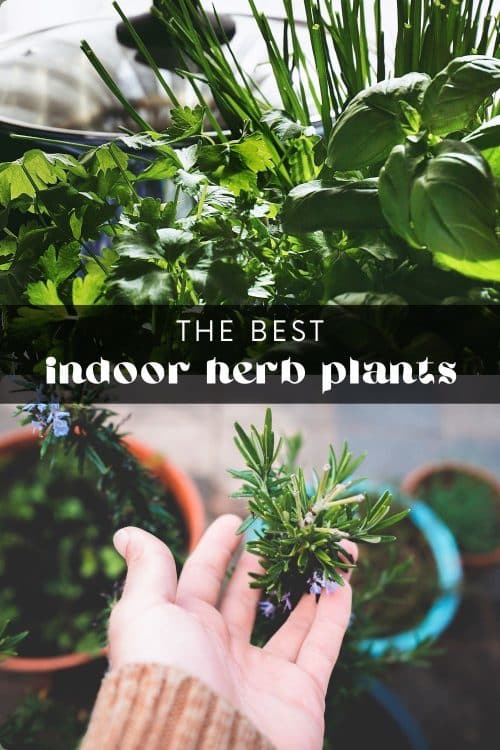
8 Best Herbs for an Indoor Herb Garden
1. Chives
For a simple yet delicious way to spruce up any meal, chives are a wonderful addition to your indoor herb garden. They are part of the allium family, which includes garlic and onions, and they taste mild yet flavorful.
Chives are a good herb choice if you don’t have a ton of space to work with. They stay pretty compact, and multiple plants can be grown in one container. The chive’s spiky foliage also adds visual interest to any herb garden! Once established, chives are perennial herbs, meaning they can continue to grow for several years, providing a steady supply of fresh aromatic herbs.
Put your chives near a sunny window or under an LED grow light when indoors. Be sure to water them about twice a week, as chives prefer slightly moist soil.
2. Lemon Balm
Found in many traditional herb gardens, lemon balm (Melissa Officinalis) is an easy-to-grow citrusy herb belonging to the mint family. When crushed, its delicate leaves release a wonderful aroma and make for a refreshing tea.
Lemon balm is a great choice for beginner gardeners because it’s drought-tolerant and can survive in more shaded areas. It prefers well-draining soil and should be kept moist but not soggy.
Lemon balm is a fast grower, so you can expect to see results pretty quickly! However, like many members of the mint family, lemon balm can be quite invasive. It’s best to plant it alone in separate pots with drainage holes and remove the flowers to stop it from self-sowing.
3. Basil
One of the most commonly used herbs, basil (Ocimum basilicum), is a wonderful addition to your indoor herb garden. This fragrant and flavorful herb comes in many varieties, such as Genovese basil (sweet basil), each with its own unique flavor. The leaves are often used in pasta, salads, and other dishes, so having a steady supply of basil is always a plus!
Basil is relatively easy to grow indoors but needs around 6 hours of sunlight daily. The sill of a sunny south-facing window is a great spot for this herb. Basil loves warm temperatures and evenly moist soil, so watering your plants regularly is important.
Well-draining potting mix and drainage holes will be your best bet for keeping your basil happy and healthy!
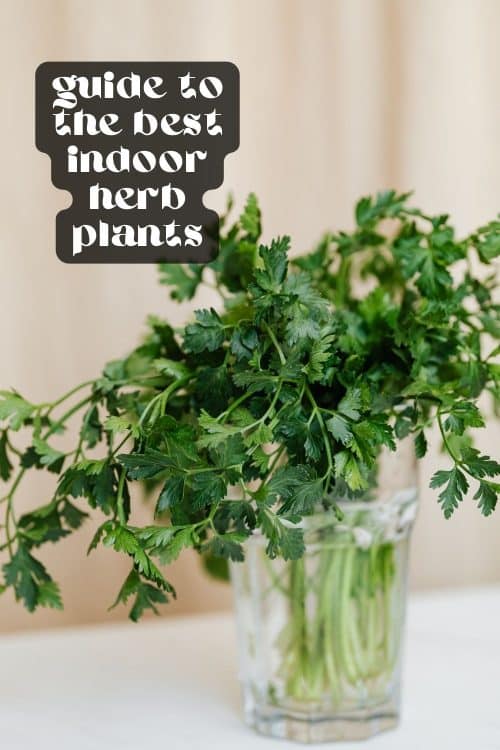
4. Cilantro
Also known as coriander due to its seeds, cilantro (Coriandrum sativum) is a wonderful and versatile herb offering a unique flavor to any dish. The leaves of this plant are quite delicate and have a citrusy flavor, while the seeds contain more of a spicy kick.
Providing adequate water, good light, and proper care will help cilantro thrive in your herb garden indoor. Regular watering and exposure to sufficient light will keep it healthy and the leaves vibrant. Cilantro can also be grown as microgreens, which are young, tender shoots packed with intense flavor. These small plants can be harvested when they reach a suitable size and are used to enhance the taste and presentation of various dishes!
5. Mint
Mint (Mentha) is one of the easiest herbs to grow indoors, and its popularity makes it a great addition to your herb garden. This perennial plant has a refreshing and distinctive flavor that’s perfect for teas, sauces, and salads.
Mint does best in bright, indirect light but can tolerate partial shade. Keep the soil moist at all times, as it does not like to be dry during the growing season! Mint also grows quickly and can become invasive if not kept in check.
Put your mint plant in a container near a south or west-facing window. Harvesting the leaves as they grow is a great way to keep your plant at a manageable size.
6. Rosemary
Rosemary (Salvia Rosmarinus) is a wonderful herb to use in cooking. Its woody pine-like aroma and flavor make it a perfect addition to everything from roasted vegetables to meats, fish, and bread.
Rosemary is super easy to care for and grows best in full sun, so near a window with natural light is ideal. It hates to be overly wet, so don’t give it too much water – the soil should be moist, not soaked. To keep roots from rotting, use well-draining potting soil and make sure the container has good drainage holes.
Rosemary can grow quite large, so it’s best to keep yours pruned if you’re growing it indoors. Prune the plants stems regularly, harvesting the leaves for use in your favorite recipes.
7. Thyme
Thyme (Thymus Vulgaris) is a fragrant and hardy herb used since ancient times for its medicinal and culinary properties. The leaves are small and oval; when crushed, they have a subtle earthy flavor.
Thyme is an excellent choice for people starting indoor herb gardening. It requires little attention and does well in a variety of climates. Thyme grows best when exposed to four (or more) hours of direct sunlight each day and should be watered whenever the top inch of soil feels dry.
Keep your thyme in hanging baskets or open containers to promote good air circulation. This helps to prevent mildew and other diseases. Prune it regularly to keep it from becoming too woody and encourage new growth.
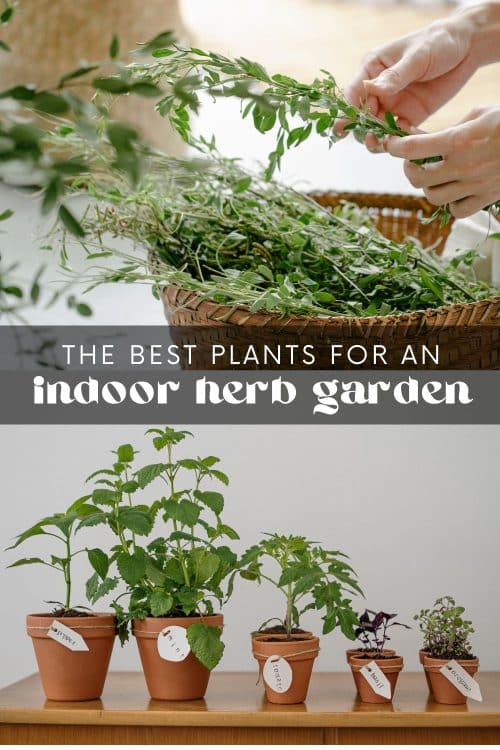
8. Parsley
Italian flat-leaf parsley (Petroselinum Crispum) is one of those herbs that work well in various dishes. Its bright, earthy flavor elevates everything from soups and salads to stews, sauces, and stir-fries.
Parsley grows best in bright, indirect light, so put it near a sunny window or under grow lights indoors. Keep the soil consistently moist (never soggy), and make sure it’s well-draining – a common theme when growing herbs indoors! The roots of this plant can also grow quite long, so it’s best to use a deep container. Parsley is a biennial, which means it takes two years to complete its life cycle.
Snip parsley as needed throughout the season, and watch your plant return even bigger and better!
How to Start an Indoor Herb Garden
Now you know what herbs will work best in your space, you’re likely wondering how to start growing herbs indoors. There are a few ways to go about this, and you can combine a few methods to curate your perfect indoor garden.
Here are some easy ways to start your indoor herb gardening journey:
Buy Herbs Plants
We’ve all seen the little potted herb plants in the grocery store or garden center. This is the best way to start indoor herb gardening. Choose a few of your favorite herbs, and you’ll be ready to roll!
However, you want to choose healthy plants that are free of pests or diseases. Gnats are a common issue for your herb garden indoor, and you want to ensure you don’t bring any infested plants home. But don’t worry, even if your beloved herb garden does get invaded by bugs, there are plenty of organic solutions to get rid of gnats off indoor plants.
Grow from Seeds
If you want to get a bit more creative, try growing your herbs from seeds. You’ll need to research and prepare for germination and potting up your seedlings, but it can be an enjoyable experience! Plus, you can control the entire process from start to finish.
Some herbs are easy to grow indoors from seed, such as basil plants. Just ensure you provide the necessary environment for your seeds by keeping them moist and in a warm spot with plenty of light.
Use an Indoor Herb Garden Kit
Finally, indoor herb garden kits are available online and in stores with everything you need to get started. These kits usually come with a selection of herbs and often include a container for your plants, soil, and fertilizer.
Herb garden kits are a great option if you’re unsure where to start in growing your own herbs from scratch.
Starting an indoor herb garden is a fun and rewarding experience. With just a few simple steps, you can enjoy the taste of fresh herbs in your cooking and create a beautiful living space in your home.
Choose some of the plants on this list, and you’ll soon have the best indoor herb garden around!

Check out these Herb Posts:
- What Herbs Are Toxic to Dogs?
- DIY Kitchen Window Herb Garden Ideas
- Herb Harvest and Preservation
- Herb Garden Ideas
- How to Get Rid of Gnats on Indoor Herbs
- 12 Best Herb Garden Plants
- 8 Best Indoor Herb Plants
- How to Grow Catmint
- How to Grow Cilantro
- How Long Does It Take Basil to Grow?
- How to Grow Mint Outdoors
- How to Grow Citronella Plants
- How to Grow Mint Indoors
- How to Grow Lavender in Containers
- How to Grow Oregano
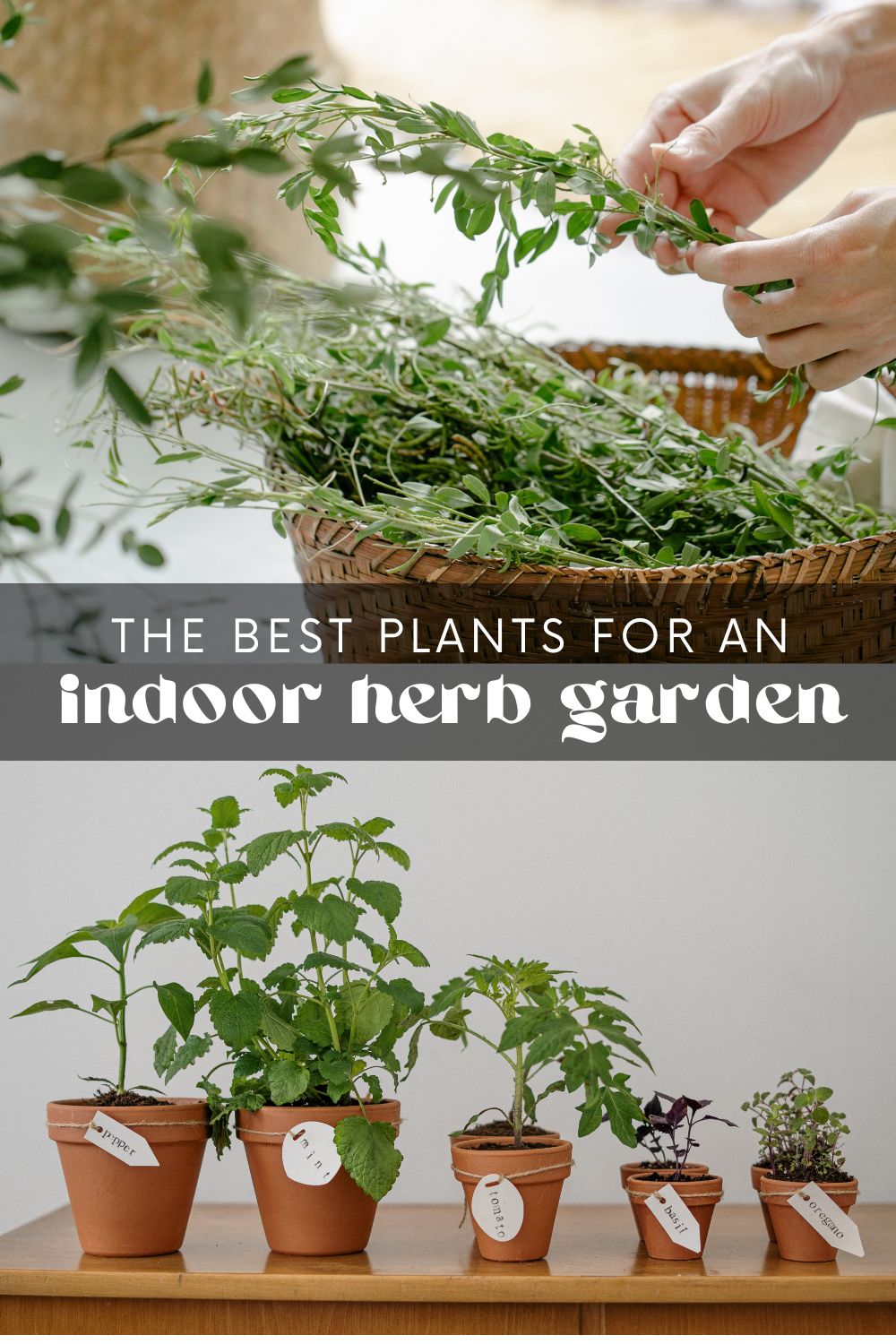
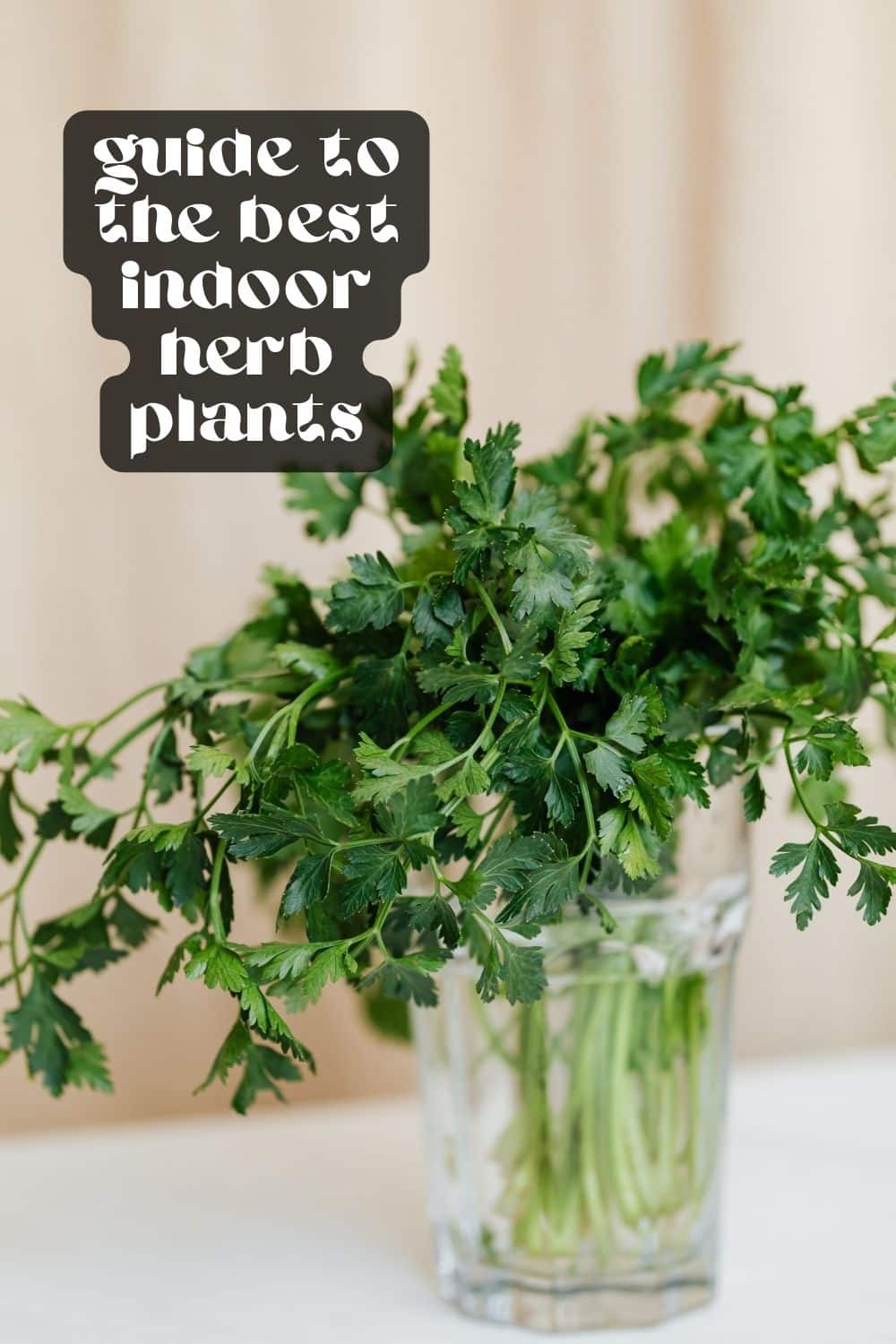
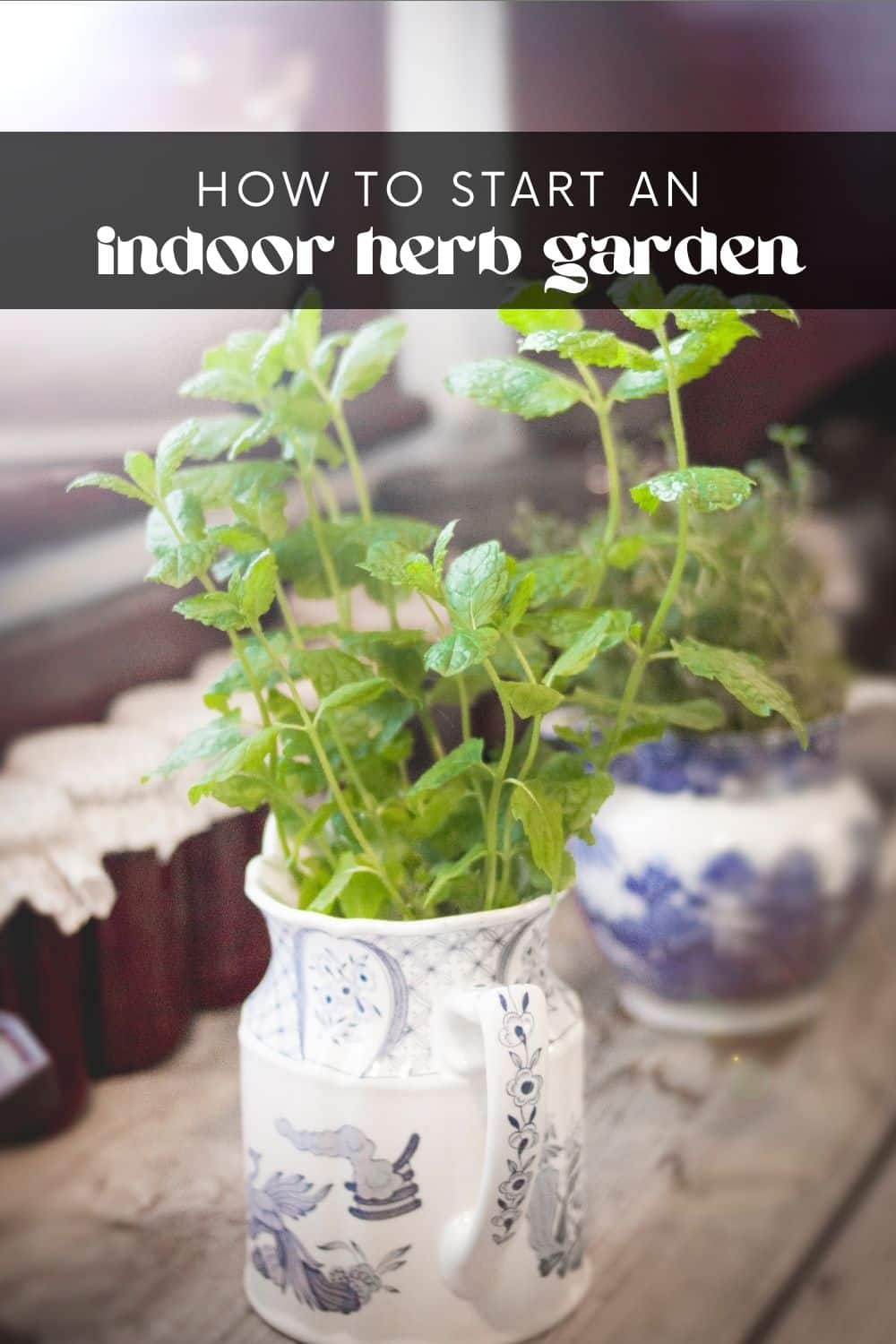
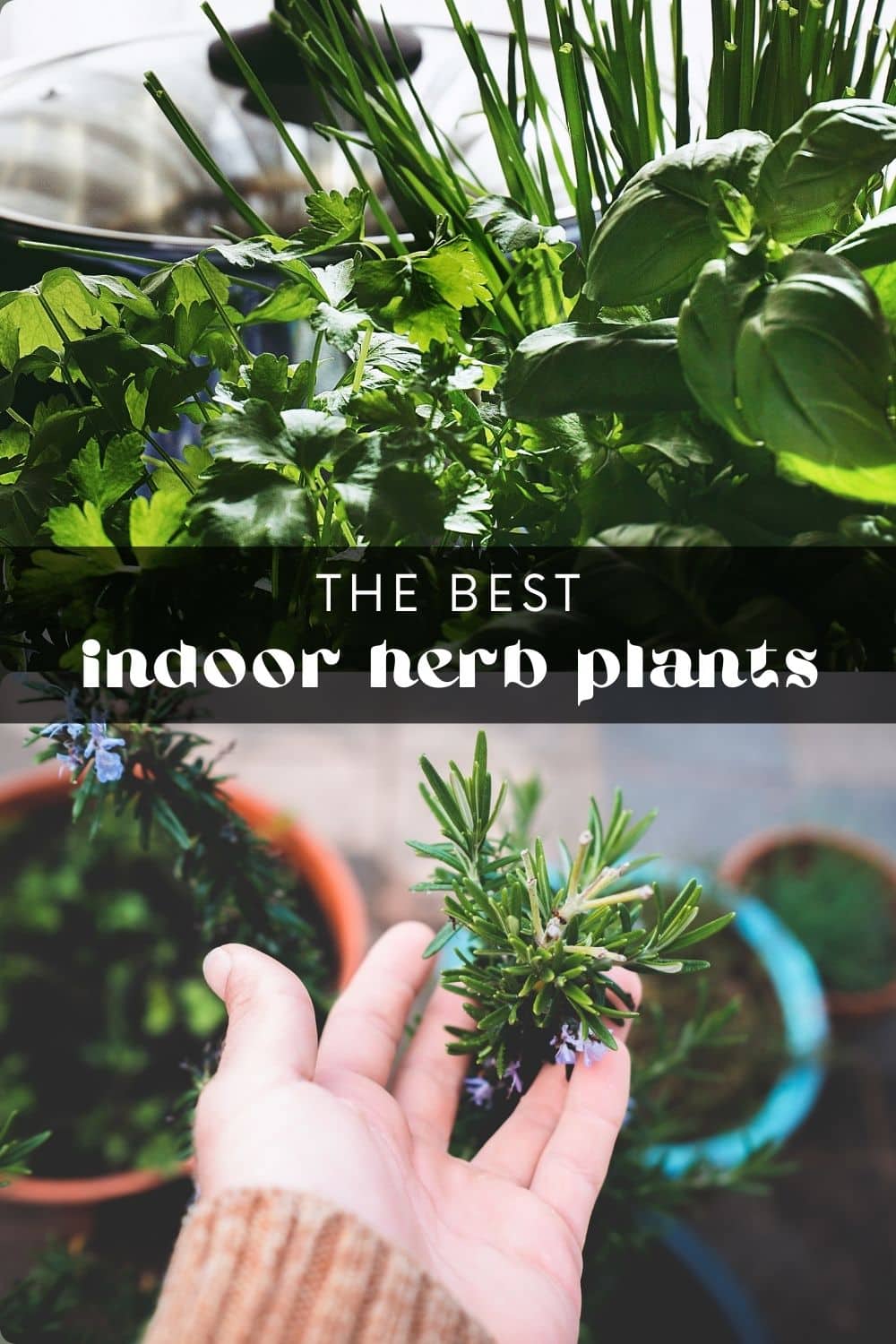





[…] 8 Best Indoor Herb Plants […]